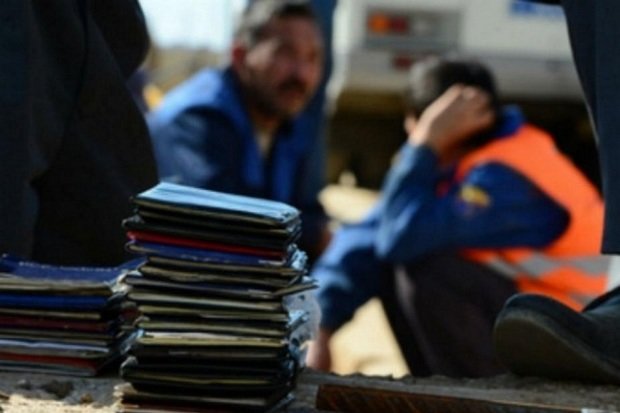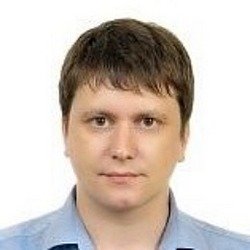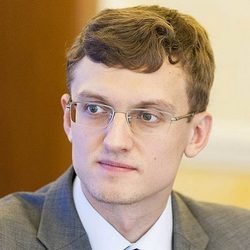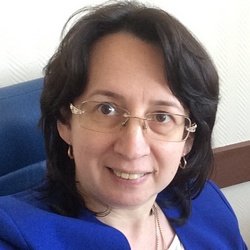Natural population decline in Russia not compensated by migration for the first time in 10 years
Experts predict an increase in birth rate closer to the 2030s
Russia's population is declining again. According to estimates of the Federal statistical agency, 146,79 million people live in Russia as of January 1, 2019 — by 87,000 less than at the beginning of 2018. Migration growth last year compensated for the natural decline of the population by only 62% and was the lowest in the entire post-Soviet period: residents of the former Soviet Union now prefer to emigrate to Eastern Europe. Read the details in the material of Realnoe Vremya.
''Natural decline will continue to grow''
According to the Russian Federal State Statistics Service (Rosstat), the number of births in 83 subjects of the country and the number of deaths in 57 subjects decreased in January-November 2018 compared to the same period of 2017. In 25 subjects of Russia, the number of deaths in 2018 exceeded 1,5-1,9 times the number of births. In general, over 11 months of last year, the number of deaths exceeded the number of births by 13,1% (in the same period last year — by 7,8%).
In addition to mortality, a reduction in migration gain contributes to the decline in the population. In the first three quarters of 2018, it decreased by as much as 42,5% (or 66,300 people) compared to the same period of 2017 — such data are provided in the December issue of monitoring the economic situation in Russia, prepared by experts of the Gaidar Institute and RANEPA (Russian Presidential Academy of National Economy and Public Administration).
The authors of the corresponding article, Yulia Florinskaya and Nikita Mkrtchyan, pointed to the reasons for this decline — a slight decrease in the number of arrivals and a 22 percent increase in the number of departures. The number of emigrants from Russia in the II and III quarters of last year was the highest in 10 years, and even if the increase in the number of departures stops and the number of arrivals begins to grow, the migration growth at the end of the year will still be at the level of 120,000 people, which will be the lowest rate for the entire post-Soviet period (taking into account the recalculation of migration growth according to the results of the all-Russian censuses of 2002 and 2010; otherwise — the lowest since the mid-2000s, the authors specify). According to Rosstat, in January-November 2018, the migration growth amounted to a little more than 119,000 people so far.

Besides, according to Florinskaya and Mkrtchyan, emigration from Russia has been greatly underestimated for already many years. Sergey Shulgin from the Institute of Applied Economic Research at RANEPA connects this fact with the changes in the assessment: ''People whose registration period finished automatically were considered to be departed — there was a work permit, it ended, and at the same moment Rosstat wrote 'departed'. That is, the real trend is not recorded — it is always very sad for the analysis.''
The statistics of emigration in Russia are conducted by three departments: Rosstat, Ministry of Internal Affairs and Federal Migration Service, says Associate Professor of Statistics at the Plekhanov Russian University of Economics Olga Lebedinskaya. ''The approximate figures: if in 2000-2010 the number of emigrants was 40,000-50,000 people per year, in 2014-2018 — already 250,000-350,000 — what is more, it is the most able-bodied and educated who are leaving the county. But these are only those who officially declared emigration,'' the expert points to another reason for the inaccuracy of estimates.
 But even despite all the features of accounting, Shulgin also notes that last year there was a significantly smaller migration growth than in 2017:
But even despite all the features of accounting, Shulgin also notes that last year there was a significantly smaller migration growth than in 2017:
''If the year before it was 211,000 people, then in 2018 the estimates were from 120,000 to 135,000. The growth is still positive and makes a contribution to the population, but the natural decline is growing and will continue to grow. We are now at the point about which demographers warned a long time ago – about 5 years ago, that natural growth will be less than migration growth.''
According to Shulgin, natural growth may reach a positive value in the second half of the 2020s. Deputy Director of the Institute of Social Analysis and Forecasting at RANEPA Vladimir Nazarov is even less optimistic and predicts an improvement in the situation only closer to the mid-2030s: ''Children born in the 80s — those who were born from 2007 to 2017, and there were a lot of them — will enter the reproductive age in 24-26 years, because the term of birth of the first child is also shifting to the right.''
Those entered reproductive age of the small generation of the '90, respectively, will also have not many children, continues Nazarov. ''Even if the birth rate does not decrease numerically, children will be born much less than they were born in the decade before. My generation of the 80's has two children — in principle, the norm that we have — and this process is slowly ending. Therefore, unfortunately, despite all the goals set by the government, natural growth in the coming years in the Russian Federation is impossible.''
Migrants are becoming less interested in Russia
Migration growth in January-September 2018 from all countries except Armenia and Turkmenistan was lower than in the corresponding period of 2017. The inflow of migrants from Uzbekistan has not recovered, although, according to the authors of the monitoring, this country has the greatest potential for migration. Those coming to work are beginning to prefer Eastern Europe to Russia.
 ''In my opinion, wages in Russia are not so attractive solely because of the devaluation of the ruble. It is one thing when the euro cost 43 rubles, and it is another when much more than 70, so it is clear that in Russia they can earn comparably less than in Eastern Europe,'' Vladimir Nazarov says.
''In my opinion, wages in Russia are not so attractive solely because of the devaluation of the ruble. It is one thing when the euro cost 43 rubles, and it is another when much more than 70, so it is clear that in Russia they can earn comparably less than in Eastern Europe,'' Vladimir Nazarov says.
All these processes, of course, reduce the working-age population. According to Rosstat, the labour force in December 2018 amounted to 76,3 million people, or 52% of the total population (in 2017 — 76,5 million). This trend, according to experts, is going to continue.
The increase in the retirement age only partly smoothes the trend, says Vladimir Nazarov. ''About 30-40% of the losses from the reduction in the number of able-bodied population are compensated. The rest should be obtained through increasing productivity, because there are no high hopes for migration. Even if we stimulate migration processes, still in the countries from which they have come to us in recent years, there also was a decline in birth rate in the '90s — this generation is also small in their countries. The entire former Soviet Union has a similar demographic structure due to the post-war echo.''
According to Lebedinskaya, the pension reform, according to preliminary estimates, should give the country's GDP 0,5-1,5%. ''As a result, the growth rate of total output will gradually increase by the end of the forecast horizon and will be 1,8-2,3% in 2020 and 2-3% in 2021. But will we reach these figures? Most likely yes, but at the expense of hidden migration,'' she says.
Tatarstan is the strongest centre of attraction in the Volga Federal District
The number of subjects of the Russian Federation with migration growth in the first 9 months of 2018 decreased from 31 to 24. According to the data indicated in the monitoring, almost all former Soviet republics received fewer people than before, but this does not apply to all regions.
 Olga Lebedinskaya explains this by ethnicity factor and ''Soviet'' attachment: ''In the Republic of Tatarstan there are two national societies actively working — Tajiks and Uzbeks.''
Olga Lebedinskaya explains this by ethnicity factor and ''Soviet'' attachment: ''In the Republic of Tatarstan there are two national societies actively working — Tajiks and Uzbeks.''
However, Tatarstan is not among the most attractive regions for migrants in the country, although it has a significant increase in this indicator, the authors of the monitoring noted. The centres of attraction are Moscow and Moscow Oblast, St. Petersburg and Leningrad Oblast, as well as Krasnodar Krai. The region with the greatest migration loss for the second year in a row is Omsk Oblast. Among the federal districts, the leaders in the loss of population — Volga Federal District and Siberian Federal District.
''In Russia, internal migration is many times higher than external. The most successful in terms of the effectiveness of inter-district migration are the Central Federal District and Northwestern Federal District, negative migration is observed in several districts,'' Lebedinskaya said.
''Traditionally, the birth rate in the Volga Federal District is quite low; Tatarstan has a little higher. Well, in general, in all ethnic republics it is on average slightly higher than the neighbouring regions,'' continues Shulgin. Migration is almost always determined by the level of economic development. Tatarstan in the Volga Federal District is the strongest centre of attraction, Shulgin says. One of the main motives for both internal and external migration is the availability of jobs: ''Then people think about housing, and if there is housing, but there is no work, people still do not go there. According to last year's statistics there were two regions with positive migration — Nizhny Novgorod region and Mordovia.''

The Russian government has developed the national project 'Demography', with its help it intends to improve the birth rate. The programme has operated since the beginning of 2018, it includes five projects, in particular, financial incentives — maternity capital — are going to continue. It is difficult to judge how effective it is — different demographers have different points of view, says Nazarov. ''There is a very big discussion on the meternity capital and other measures. It is still too early to judge the results, but some things are objectively happening — there are few young people, whatever you do, demography is still a very inert thing.''
Maternity capital did play a role in increasing the birth rate. But in order to gain a foothold on the natural level for the Russian society ''two children per family'', a more vigorous economic growth is needed, Nazarov said.